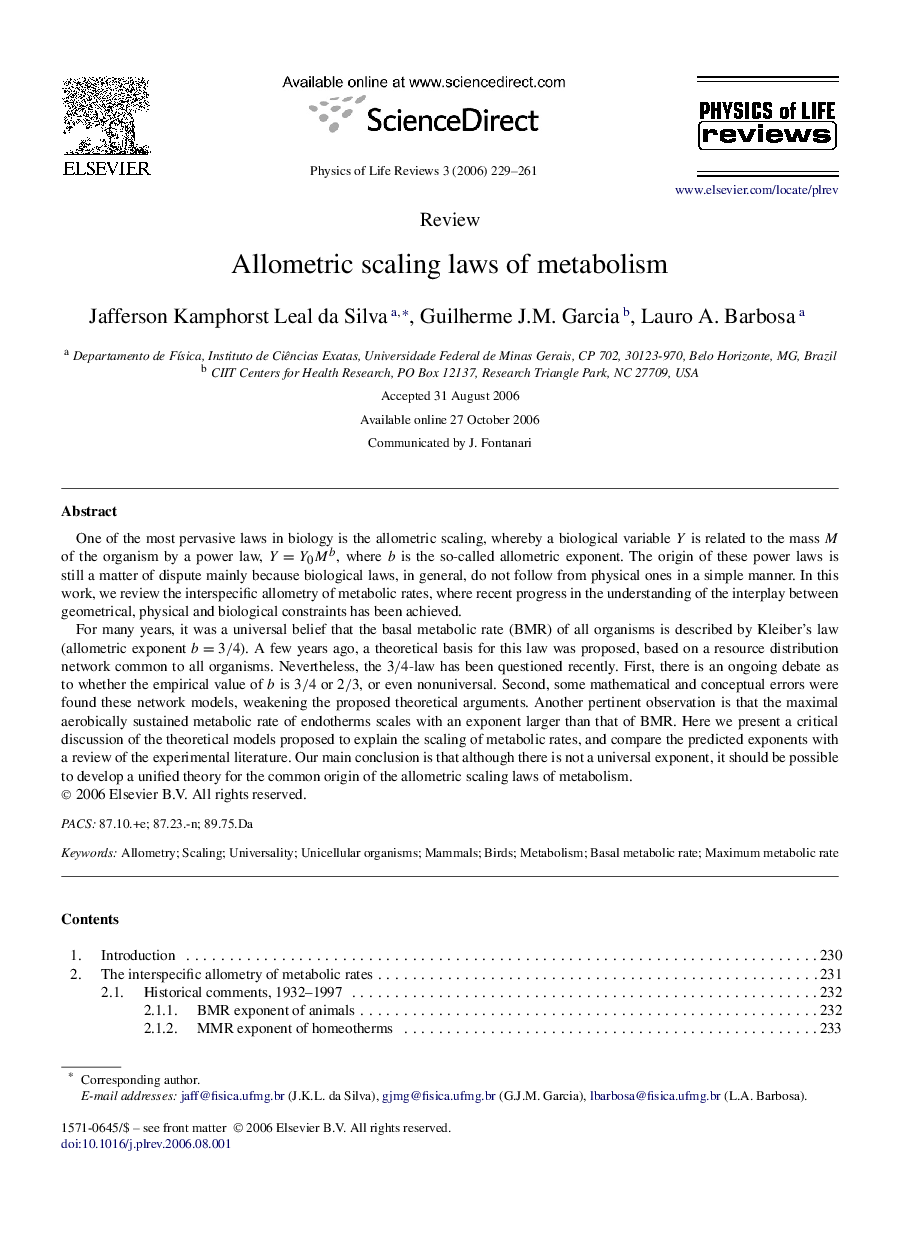| Article ID | Journal | Published Year | Pages | File Type |
|---|---|---|---|---|
| 1868676 | Physics of Life Reviews | 2006 | 33 Pages |
One of the most pervasive laws in biology is the allometric scaling, whereby a biological variable Y is related to the mass M of the organism by a power law, Y=Y0MbY=Y0Mb, where b is the so-called allometric exponent. The origin of these power laws is still a matter of dispute mainly because biological laws, in general, do not follow from physical ones in a simple manner. In this work, we review the interspecific allometry of metabolic rates, where recent progress in the understanding of the interplay between geometrical, physical and biological constraints has been achieved.For many years, it was a universal belief that the basal metabolic rate (BMR) of all organisms is described by Kleiber's law (allometric exponent b=3/4b=3/4). A few years ago, a theoretical basis for this law was proposed, based on a resource distribution network common to all organisms. Nevertheless, the 3/4-law has been questioned recently. First, there is an ongoing debate as to whether the empirical value of b is 3/4 or 2/3, or even nonuniversal. Second, some mathematical and conceptual errors were found these network models, weakening the proposed theoretical arguments. Another pertinent observation is that the maximal aerobically sustained metabolic rate of endotherms scales with an exponent larger than that of BMR. Here we present a critical discussion of the theoretical models proposed to explain the scaling of metabolic rates, and compare the predicted exponents with a review of the experimental literature. Our main conclusion is that although there is not a universal exponent, it should be possible to develop a unified theory for the common origin of the allometric scaling laws of metabolism.
